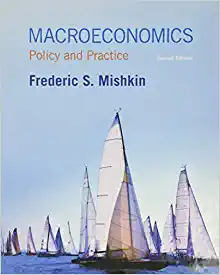


4. Consider the crude oil market in two countries. Country A has rm 1 producing oil at a constant marginal cost cl = 2. Country B has rm 2 producing oil at a constant marginal cost (:2 = 2. If international trade is not allowed, the oil market in each country has a monOpoly market structure. Firm 1 supplies country A with output level QA = qlA. Firm 2 supplies country B with output level Q B = (123. If international trade is allowed, the oil market in each country is duopoly under Cournot competition. Firm 1 supplies both country A and B with quantities q14 and q1B, respectively. Firm 2 supplies both country A and B with quantities q24 and q2B, respectively. The inverse demand for oil of country A is PA(QA) = 38 - QA, where QA = q14 + 92A. The inverse demand for oil of country B is PB(QB) = 20 - QB, where QB = 91B + 92B.a. Consider the case of no international trade. Compute the output level in country A (q) and country B (12%). Then, compute the corresponding rm prots (f/fag\") and computer surplus (08,14,083!) b. Consider the case of free trade. COmpute the Cournot equilibrium output levels qE, qgE, q'ff, and quE. Then, compute the corresponding rm prots ({VEJrVE) and computer surplus (CSXESgE). Note that each rm earns prot from two markets, that is Trim = wE +7rf'gE and aim = W21? + 7,;an- C. COmpare the results in part (a) and (b), which party is the winner and which party is the loser after opening up for international trade? (Party here refers to consumers of a country or a rm.) For the rest of this question, consider the following game about trade policy. At stage 1, country A and country B choose tariff level 13A and t3, reSpectively. At stage 2, after observing 75A and t3, rm 1 and rm 2 engage in Cournot competition in two markets as described above. Country A and B both try to maximize the total surplus of its side. Country A's total welfare includes the consumer surplus of country A, rm 1's prot, and tariH revenue collected from rm 2. Country B's total welfare includes the consumer surplus of country B, rm 2's prot, and tariff revenue collected from rm 1. That is WA(tA: t3) = CSA(tA) + THUAJB) + (1214134, WB(tA:tB) = CSB(tB) + 7T2(tA,tB) + (Instr;- (:1. With tariff, it is as if the marginal cost of the rm increases when it supplies to a foreign country. More Specically, in country A, rm 1 has a marginal cost c1 = 2, while rm 2 has a marginal cost Cg = 2 +tA. In country B, rm 1 has a marginal cost 01 = 2 +tB, while rm 2 has a marginal cost 02 = 2. Solve for the Cournot equilibrium quantities in country A and country B. e. Intuitively, can you guess which country tends to set a higher tariff? f. Continue with part ((1), nd the equilibrium tariff levels, tXE and th












